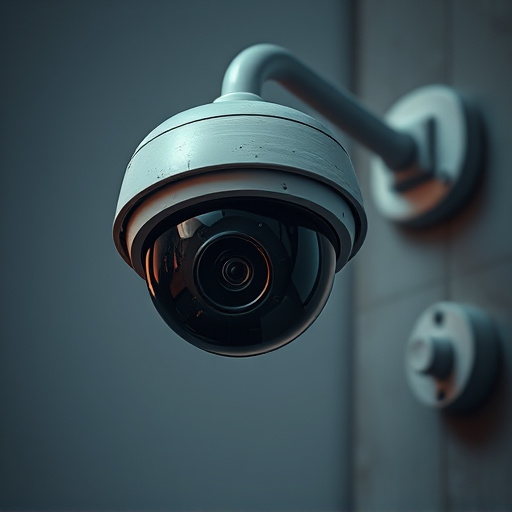Strategic fake security camera height placement is key to realistic deterrence. Mounting them at eye level or slightly elevated mimics real CCTV, enhancing security for homes and businesses without appearing unnatural. Correct positioning considers line of sight, capturing open areas and narrow spaces without obstruction. Advanced techniques include diverse levels, complex angles, and subtle details for maximum realism. Regular testing optimizes performance to deter intruders and provide peace of mind through effective Fake Security Camera Height Placement.
“Transform your property into a secure zone with our comprehensive guide to installing a mock surveillance system. Learn the art of strategic fake security camera height placement, a key element in creating a convincing and effective deterrent. From understanding basic placement principles to advanced tips for authenticity, we cover it all.
Discover the ideal height for maximum impact and follow our step-by-step installation process. Enhance realism and test your system’s effectiveness with our expert advice. Elevate your security measures today!”
- Understanding Fake Camera Placement Basics
- Choosing the Right Height for Realistic Impact
- Installing Cameras: Step-by-Step Guide
- Enhancing Authenticity: Advanced Tips
- Testing and Fine-Tuning Your Mock System
Understanding Fake Camera Placement Basics
When planning a mock surveillance system, understanding basic fake camera placement is key. Fake security cameras should be strategically positioned to mimic real surveillance setups while maintaining an element of realism that can fool even the most discerning eye. The height at which these dummy cameras are placed plays a significant role in their effectiveness.
Generally, placing fake security cameras at eye level or slightly elevated is recommended. This mimics the typical positioning of real CCTV cameras, making them less conspicuous and more convincing to potential intruders. Avoid mounting them too high, as it may look unnatural; instead, consider the average height of actual security personnel walking by, ensuring a realistic visual impact. The right fake camera placement can significantly enhance your home or business’s perceived security measures.
Choosing the Right Height for Realistic Impact
When designing a mock surveillance system, one crucial aspect often overlooked is the strategic placement of fake security cameras. To achieve a realistic impact, consider the height at which these dummy cameras are installed. Typically, placing them at eye level or slightly elevated can significantly enhance the effect. This mimics the common placement of real security cameras, creating an illusion of constant surveillance. By doing so, it discourages potential intruders, as they would feel as if they’re always under observation.
The height choice should also align with the environment’s natural line of sight. For instance, in open areas or corridors, positioning the fake cameras at eye level ensures a comprehensive view. In contrast, in corners or narrow spaces, slightly elevated heights can help capture unexpected movements without obstructing the field of vision. Remember, the goal is to create an authentic atmosphere that deters criminal activity, making your mock surveillance system an effective deterrent.
Installing Cameras: Step-by-Step Guide
Installing cameras is a crucial step in setting up your mock surveillance system, and proper height placement is key to achieving effective coverage. To start, decide on the strategic locations around the area you wish to monitor. Typically, placing cameras at eye level or slightly elevated ensures optimal vision without distorting perspectives.
When installing each camera, ensure it’s securely fastened and aligned correctly. Use a level to check horizontal and vertical adjustments, ensuring each lens captures a clear view without any obstructions. Remember, the fake security camera’s height placement should mimic real surveillance equipment for maximum realism in your mock system setup.
Enhancing Authenticity: Advanced Tips
To enhance the authenticity of your mock surveillance system, consider advanced tips like strategic fake security camera height placement. Positioning cameras at varying heights—including overhead and ground level—mimics a genuine security setup. This technique adds depth and realism to your simulated environment, making it harder for viewers to distinguish reality from deception.
Additionally, utilize realistic camera angles and arrangements. Avoid placing all cameras in straight lines; mimic real-world installations by angling them at different points to create a complex network. Incorporate subtle details like camera logos or markings to further fool observers into believing they’re witnessing actual surveillance footage.
Testing and Fine-Tuning Your Mock System
After installing your mock surveillance system, it’s crucial to test and fine-tune its performance for optimal results. Start by ensuring all cameras are functioning correctly and capturing clear footage. Verify that each camera is placed at an ideal height—a key factor in achieving effective coverage. Fake security camera height placement should be strategic, taking into account the area you wish to monitor, whether it’s a bustling metropolis or a quiet residential neighborhood.
Adjusting the camera angles and zoom settings can significantly enhance your system’s effectiveness. Play around with different configurations to get the best view of potential entry points or problem areas. Regular testing will help you fine-tune your mock surveillance system, making it an effective deterrent for would-be intruders and providing peace of mind.
A mock surveillance system, when installed correctly, can serve as a powerful deterrent for potential intruders. By understanding the basics of fake camera placement, choosing the right height for maximum realism, and following a detailed installation guide, you can create an effective security solution without breaking the bank. Advanced tips on authenticity enhancement and testing ensure your system not only looks real but also functions as intended. Remember, the key to success lies in attention to detail, from camera positioning to regular maintenance – all contributing to a secure environment.
